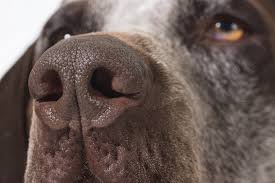Dog Flu Update
The current rash of cases of canine influenza has dog owners very concerned and uncertain of how to protect their dogs. I’m going to share the key things you need to know, and provide you with resources and actions to decrease your dog’s infection risk.
This current outbreak of dog flu started in the Southeast US, with several cases reported at multiple day dog shows in Georgia and Florida. From those shows, many dogs traveled to other parts of the country, including Purina Farms in Missouri, with the United States Austrialian Shepherd National Specialty was being held. Reports circulated of two dogs being infected there. As dogs have traveled most cases are being reported in Florida, Georgia, Kentucky, Louisiana, Missouri, North Carolina, South Carolina, Tennessee, California, Illinois, and Texas. The specific strain of virus involved is the H3N2 strain.
Here are the key facts about canine influenza, courtesy of an American Kennel Club news release:
Canine Influenza Virus is spread through:
- Close proximity to infected dogs (it is airborne and can travel up to 20 ft.)
- Contact with contaminated items (bowls, leashes, crates, tables, clothing, dog runs, etc.)
- People moving between infected and uninfected dogs
- 80% of all dogs that are exposed to the virus will contract it
- The virus lives up to 24 hours on soft surfaces and up to 48 hours on hard surfaces.
- Some exposed dogs will be subclinical carriers – meaning some dogs will contract and spread the virus without showing symptoms.
- Dogs show clinical signs within 24-48 hours and can shed the virus for up to 28 days from exposure.
- Most dogs will completely recover with proper treatment.
- Dogs that regularly interact with dogs outside of their own family or frequent places where many dogs gather are most susceptible to exposure to Canine Influenza Virus.
The following symptoms are commonly seen:
- Dry, hacking cough (similar to kennel cough)
- Lack of appetite
- Lethargy
- Discharge from the nose or eyes
- Fever (normal temperature is 101 – 102)
Prevention of canine influenza involves avoiding exposure. Avoid interactions with dogs not known to be healthy, and with dogs that have been in affected areas. If you are in an area where there have been confirmed cases, avoid dog parks, pet stores, boarding kennels, groomers and similar venues for 30 days. Never use public water bowls, toys, or crates. If you even think your dog may have been exposed, keep him away from other dogs for at least two weeks — remember a small percentage of dogs can spread the disease without getting sick themselves. Should your dog show signs of illness, isolate him from other dogs and seek veterinary care immediately. Disinfect food and water bowls and other equipment using a 1:32 part bleach solution regularly. And if your dog is at high risk, consider vaccinating with the H3N2 flu vaccine. Immunity requires at least 2 weeks after the second dose of the vaccine, so planning ahead is essential.
Beyond these common sense and traditional approaches, you can also take actions to strengthen your dog’s immune system strength. Feed high quality food, preferably very low in starches/carbohydrates. Keep your dog active and fit, and at a healthy body weight. Supplements such as omega 3 fatty acids and immune support combination products support immune system function. Probiotics also support the immune system, and strengthen the digestive system. Herbs, including echincaea and astragulus have been reported to decrease the duration and severity of viral infections, and to activate immune system cells (macrophages and natural killer cells) to attack virus infected cells.
It’s important to remember that no one particular strategy will prevent your dog from getting canine influenza. But using vigilance, common sense, and sound health practices, you can minimize the risks to your dog’s health.
For your reference, listed below are products I trust and recommend in my practice. There are many products on the market that are not effective, do not meet their label analysis, or are made from undesirable ingredients.